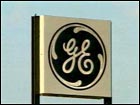|
Favorite Stock: GE (again)
|
 |
November 27, 2001: 1:25 p.m. ET
Portfolio manager says Immelt to focus on value-added services and solutions.
By Staff Writer Meghan Collins
|
NEW YORK (CNN/Money) - If it seems like GE déjà vu, you're right.
Analysts are reassessing after a year of transitions for General Electric -- led by the departure of CEO Jack Welsh, who was not only the conglomerate's leader, but also its personality.
But Jeff Immelt, the new CEO, has the skills to continue the company's traditional values, while moving the business mix from metal bending toward proprietary and intellectual content, says Dreyfus Appreciation Fund manager Charles Sheedy. He has chosen GE (GE: down $0.20 to $41.12, Research, Estimates) as his top stock pick.
He is hardly alone. Last week, AG Edwards equity strategist Scott Wren chose the company as his favorite stock. While Wren highlighted the diversity of its businesses, Sheedy likes GE's revised business focus -- away from acquisitions and restructuring toward a model that reduces asset intensity and focuses on value-added services and solutions.
Because much of GE's business is based in services, its revenue and earnings visibility are much less dependent on the overall economic cycle, making it better able to weather an economic slowdown, says Sheedy.
And he says the company's diverse business holdings, which include a mix of long and short lead times in the development and manufacture of products, insulate it from sector-specific turmoil in any one business unit. That makes the earnings visibility for General Electric quite strong, Sheedy says.
The company's stock price currently falls almost in the middle of its 52-week range between a high of $56.18 and a low of $28.50.
Sheedy had some additional thoughts on what makes GE his favorite stock:
What draws you to General Electric? What do investors need to know about it?
What investors fail to realize is that shareholder value creation, over time, is a function of a company's return on invested capital. As such, GE's ROIC has improved from 18.1 percent in 1993 to 27.2 percent in 2000 and should continue to show improvement. This has led to superior returns for investors in this company as the stock's total return since 1993 is 23.9 percent versus 13.9 percent for the S&P 500.
What growth prospects do you expect over the next 12 months?
General Electric is well positioned to weather an economic slowdown. GE's revenue and earnings visibility are much less dependent on the overall economic cycle, as 70 percent of GE's revenue base is now service related.
Furthermore, its long-cycle businesses -- including Aircraft Engines, Medical Systems, GE Capital and Power Systems -- account for 75 percent of GE's earnings base. GE's broad business portfolio means that the company is insulated from sector-specific issues in any one-business unit.
Due to its substantial backlog and long lead times in these businesses, the earnings visibility for General Electric is quite strong. Earnings growth for GE should be 12 percent to 13 percent in 2002, excluding goodwill amortization, which is quite extraordinary considering the economic environment.

|
|
|
Charles Sheedy | |
Are there any risks unique to the stock?
Due to the liquidity of the stock, GE is often used as a proxy for the market by short-term oriented investors. As a result, the stock can be quite volatile at times. But for long-term investors, GE's consistent, predictable and above-average earnings growth rate should lead to above-average rates of return.
What are the potential negatives to investors buying it now?
Clearly, GE's sales are sensitive to swings in the economic cycle and GE is not anticipating a recovery in its short-cycle businesses -- including NBC, Plastics, Appliances, and Industrial Systems. The United States remains weak and Europe has slowed. These businesses are expected to be down 5 percent to 15 percent. However, GE's long cycle businesses should be up 30 percent to 35 percent, which should more than offset the expected weakness in the short-cycle divisions.
How has the departure of Jack Welch affected the stock and do you see this impacting it more in the future?
As Jack Welch stated, "You desperately want to have enough technology in your product so that you don't end up being in a commodity situation." We believe that GE's new CEO, Jeff Immelt, has the right skill set to transition GE's business mix more towards proprietary and intellectual content, and away from metal bending, which is more asset intensive.
This business shift should enable GE's return on invested capital to rise towards 40 percent from its current rate of 28 percent. At a time where end-market demand is weak, this is the best strategy of creating shareholder value. While consistency, predictability and strong visibility were hallmarks of the Welch era, GE's new senior management is as firmly committed to these tenets to ensure the future of this company.
What is your financial interest in the stock? Do you or you company own it?
As of Oct. 30, 2001, the Dreyfus Appreciation Fund owned 3.65 million shares of GE. 
|
|
|
|
|
|

|

